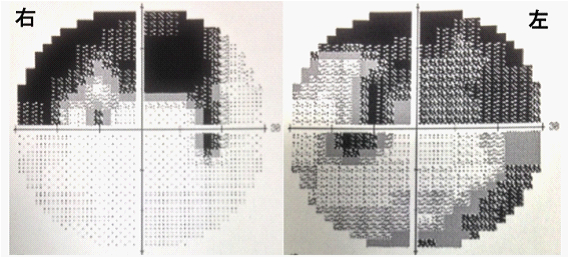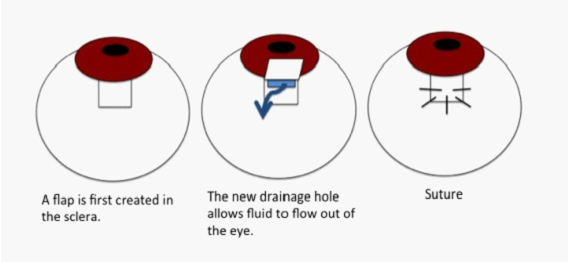What's Glaucoma?
Glaucoma is a condition that causes damage to eye's optic nerve. It's often associated with a pressure inside the eye, called intraocular pressure (IOP). The increased IOP can damage the optic nerve. If damage to the optic nerve from high IOP continues, glaucoma will cause serious and permanent loss of vision without treatment. Glaucoma often tends to be inherited and may show slow progression in life. Most people with early stage of glaucoma have no symptoms. The prevalence of glaucoma in a Japanese population was 5%, and increased with age. This suggests that it is important for regular check-up by ophthalmologists so that glaucoma can be diagnosed and treated at its early stage.
Types of glaucoma
Congenital glaucoma.
This type of glaucoma occurs in babies when there is incorrect development of the eye's drainage system before birth. This leads to increased IOP, which damages the optic nerve. Symptoms of childhood glaucoma include enlarged eyes, cloudiness of the cornea. Microsurgery can often correct the structural defects.
Angle-closure glaucoma.
Also called acute or chronic angle-closure or narrow-angle glaucoma, this type of glaucoma is less common but can cause a sudden increase of pressure in the eye. Drainage system in eye is poor because the angle where a drainage channel is located is too narrow.
Open-angle glaucoma and Normal tension glaucoma.
With open-angle glaucoma, the structures of the eye appear normal, but fluid in the eye does not drain properly through the trabecular meshwork. The IOP rises higher than normal eyes, and the high IOP damage optic nerve. The entrances to the drainage canals are clear. The clogging problem occurs further inside the drainage canals, called the trabecular meshwork. Normal-tension glaucoma (NTG) is known as low tension or normal pressure glaucoma. NTG is a form of glaucoma in which damage occurs to the optic nerve without eye pressure in excess of the normal range. In general, a "normal" pressure range is known between 10-20 mm Hg. Japanese populations have a substantially higher incidence of NTG. In fact, a Japanese study found NTG accounted for 92 percent of open angle glaucoma cases in Japan.
Other types of glaucoma
Variants of glaucoma include secondary glaucoma, pigmentary glaucoma, pseudoexfoliative glaucoma, traumatic glaucoma and neovascular glaucoma.
Examinations for glaucoma
Tonometry
Tonometry measures the pressure within the eye. The range for normal pressure is 10-21 mmHg. Eye pressure is unique to each person, and fluctuates within a day.
Ophthalmoscopy
This test helps the doctor examine the optic nerve and retina for glaucoma damage.
Perimetry
Perimetry is a visual field test. This test is useful for determine whether your eye has been affected by glaucoma.

Gonioscopy
This exam helps determine whether the angle is open and wide or narrow and closed. During the exam, a hand-held contact lens is placed on the eye.
Care and treatment of glaucoma
Eye drops
Currently, in a world, eye drops are the first choice for treating glaucoma patients. Eye drops used in managing glaucoma decrease eye pressure by helping the eye's fluid to drain better or decreasing the amount of fluid made by the eye.
Laser Surgery
This helps increase the flow of fluid out of the eye.
Conventional Surgery
Conventional surgery (filtering microsurgery) involves creating a drainage canal. We often use a small surgical filtration device. This new opened canal allows the intraocular fluid to bypass the clogged drainage canals.


